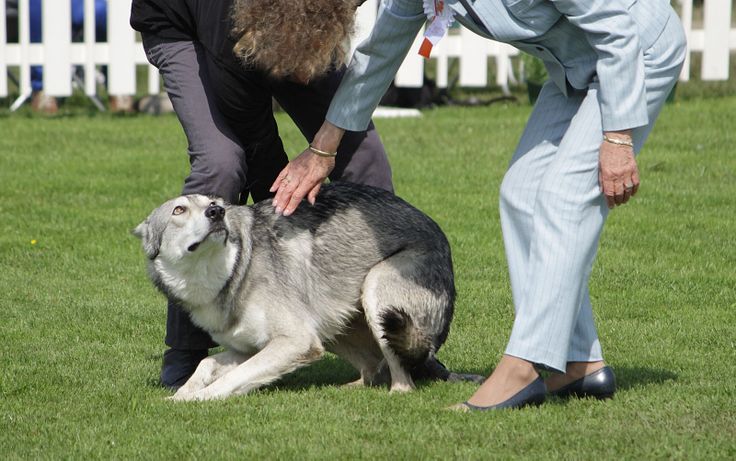dog anxiety, Fear and Anxiety, Fears
Understanding Anxiety vs. Fear in Dogs: Key Differences and How to Tell Them Apart.
Understanding Anxiety vs. Fear in Dogs: Key Differences and How to Tell Them Apart By Will Bangura, M.S., CBCC-KA, CPDT-KA, (Dog Behaviorist,) Certified Behavior Consultant.
Understanding the differences between dogs with anxiety and fears is crucial for effective training and behavior modification. While these two conditions may seem similar, they have distinct differences that require different approaches. In this article, we’ll explore the characteristics of each and how to address them.
Understanding Anxiety in Dogs.
Anxiety in dogs is a complex condition characterized by persistent and excessive worry, fear, or unease. Anxiety can significantly impact a dog’s overall well-being and behavior. Dogs with anxiety can display various stress-related behaviors, including panting, pacing, whining, trembling, and avoidance. Dogs with anxiety may also be overly attached to their owners and may experience separation anxiety when left alone.
The causes of anxiety in dogs can vary widely, from genetic predispositions to environmental factors such as loud noises, changes in routine, or stressful events like moving to a new home or going to the vet. In some cases, anxiety can also be caused by medical conditions such as hypothyroidism or chronic pain. Identifying the root cause of a dog’s anxiety is essential to finding the right approach for addressing it.
Addressing Anxiety in Dogs.
When working with a dog with anxiety, it’s important to understand that their behavior is not their fault and requires patience and understanding. One of the most important things you can do for a dog with anxiety is to establish a consistent routine and create a safe, comfortable environment. This can include providing a quiet space to retreat if they feel overwhelmed and ensuring access to food, water, and comfortable bedding.
Another helpful technique for managing anxiety in dogs is providing plenty of exercises and mental stimulation. This can include activities like regular walks, interactive toys, and training exercises that challenge their minds and keep them engaged. Dogs with anxiety often benefit from having a job or purpose, such as participating in obedience training or agility courses.
Medication or other interventions may sometimes be necessary to manage severe anxiety in dogs. This should be discussed with a veterinarian or a qualified animal behaviorist. Medications like antidepressants and anti-anxiety drugs can effectively manage anxiety but should be used with behavior modification techniques.
Understanding Fear in Dogs.
Fear is a natural emotion that all dogs experience. While some fear is normal and healthy, excessive fear can become problematic if it interferes with a dog’s ability to function normally. In dogs, fear is a more immediate response to a perceived threat, and dogs can display a range of behaviors, such as growling, barking, cowering, or attempting to escape.
Like anxiety, fear in dogs can be caused by various factors, including genetics, early life experiences, or exposure to traumatic events. Some common fears in dogs include fear of loud noises, strangers or other dogs, and specific objects or situations.
Addressing Fear in Dogs.
When working with a dog with fear, it’s important to address the root cause of their fear and work to desensitize them to it. This involves exposing them to what they fear in a controlled and safe environment and gradually increasing their exposure over time. This is known as desensitization and counter-conditioning.
Positive reinforcement techniques can be especially effective in addressing fear in dogs. This involves rewarding the dog for calm and confident behavior and avoiding punishment or negative reinforcement, which can exacerbate their fear. For example, if a dog is fearful of other dogs, rewarding them for looking at another dog calmly and without reacting can effectively reduce their fear.
Creating a safe and comfortable environment for dogs with fear is also important. This can include providing a safe space to retreat if they feel overwhelmed and avoiding exposing them to situations or stimuli that trigger their fear.
Being patient and taking things slow is important when working with a fearful dog. Rushing the process can cause setbacks and make the dog more fearful. Working with a qualified professional, such as a certified dog trainer or behaviorist, can be especially helpful in developing an effective behavior modification plan for dogs with fear.
Differences between Anxiety and Fear in Dogs.
While anxiety and fear in dogs share some similarities, there are also some key differences between the two conditions. Anxiety is characterized by persistent worry, fear, or unease, while fear is a more immediate response to a perceived threat. Anxiety is often associated with more subtle behaviors such as panting, pacing, or avoidance. At the same time, fear can be more obvious, with dogs displaying behaviors such as growling, barking, or attempting to escape.
Another key difference between anxiety and fear in dogs is their underlying causes. While fear is typically a response to a specific trigger or event, anxiety can be caused by various factors, including genetics, environment, and medical conditions.
Distinguishing Between Anxiety and Fear Behaviors in Dogs.
One of the key challenges in identifying whether a dog has anxiety or fear is that the symptoms of these conditions can sometimes be similar. However, several key differences can help you determine which condition your dog may be experiencing.
Observing a dog’s behavior in different situations and contexts is important to determine whether it has anxiety or fear. Here are some examples of behaviors that may be indicative of anxiety or fear in dogs.
Behaviors associated with dog anxiety.
- Excessive panting or drooling
- Pacing or restlessness
- Refusal to eat or drink
- Hyper-vigilance or excessive alertness
- Excessive grooming or self-mutilation
- Repetitive behaviors such as spinning or tail chasing
Behaviors associated with dogs with fear.
- Cowering or hiding
- Aggression or growling
- Barking or whining
- Attempting to escape or flee
- Trembling or shaking
- Urinating or defecating indoors
One of the key differences between anxiety and fear in dogs is the underlying cause of these behaviors. Anxiety is often the result of a generalized sense of unease or worry, whereas fear is usually a response to a specific stimulus or situation. For example, a dog with separation anxiety may display excessive panting or pacing when left alone. In contrast, a dog who fears thunderstorms may exhibit behaviors such as trembling or hiding during a storm.
Another key difference between anxiety and fear is the intensity of the dog’s response. While dogs with anxiety may display subtle behaviors such as panting or pacing, dogs with fear often exhibit more overt signs such as growling or attempting to escape. Fear can also be triggered more quickly and intensely than anxiety, as it is a more immediate response to a perceived threat.
In some cases, dogs may exhibit anxiety and fear, making it more challenging to determine which condition primarily drives their behavior. In these cases, working with a qualified dog trainer or behaviorist can be especially helpful in developing an effective behavior modification plan.
Understanding the differences between anxiety and fear in dogs is key to identifying the underlying causes of problem behaviors and developing effective treatment plans. By observing your dog’s behavior in different situations and contexts, you can identify whether they are experiencing anxiety, fear, or a combination of both and take steps to help them feel more comfortable and secure.
Understanding the differences between anxiety and fear in dogs is essential for effective training and behavior modification. While anxiety and fear share similarities, they also have distinct differences requiring different approaches. Identifying the root cause of a dog’s anxiety or fear and developing a personalized behavior modification plan can help to alleviate their symptoms and improve their overall well-being.
References.
- Overall, K. L. (2013). Understanding Canine Anxiety. Compendium: Continuing Education for Veterinarians, 35(3).
- Fearful dogs – Desensitisation and counterconditioning. (n.d.). Retrieved February 15, 2023, from https://www.bluecross.org.uk/pet-advice/fearful-dogs-desensitisation-and-counterconditioning
- Dodman, N. H. (1997). Use of fluoxetine to treat dominance aggression in dogs. Journal of the American Veterinary Medical Association, 211(5), 610–612.
- Luescher, A. U., & Reisner, I. R. (2008). Canine anxiety and phobic disorders. Veterinary Clinics of North America: Small Animal Practice, 38(5), 1081–1106.
- “Canine anxiety: Symptoms, causes, and treatment options.” American Kennel Club. https://www.akc.org/expert-advice/health/canine-anxiety-symptoms-causes-treatment/
- “Dealing with fear and anxiety in dogs.” The Humane Society of the United States. https://www.humanesociety.org/resources/dealing-fear-and-anxiety-dogs
- “Fear and anxiety in dogs.” ASPCA. https://www.aspca.org/pet-care/dog-care/common-dog-behavior-issues/fear-and-anxiety-dogs
- “Anxiety in dogs: How to recognize and manage it.” Cummings Veterinary Medical Center at Tufts University. https://vet.tufts.edu/behavior/wp-content/uploads/Anxiety.pdf
- “Behavior problems in dogs.” Merck Veterinary Manual. https://www.merckvetmanual.com/behavior/behavior-problems-in-dogs/fear-and-anxiety-in-dogs


